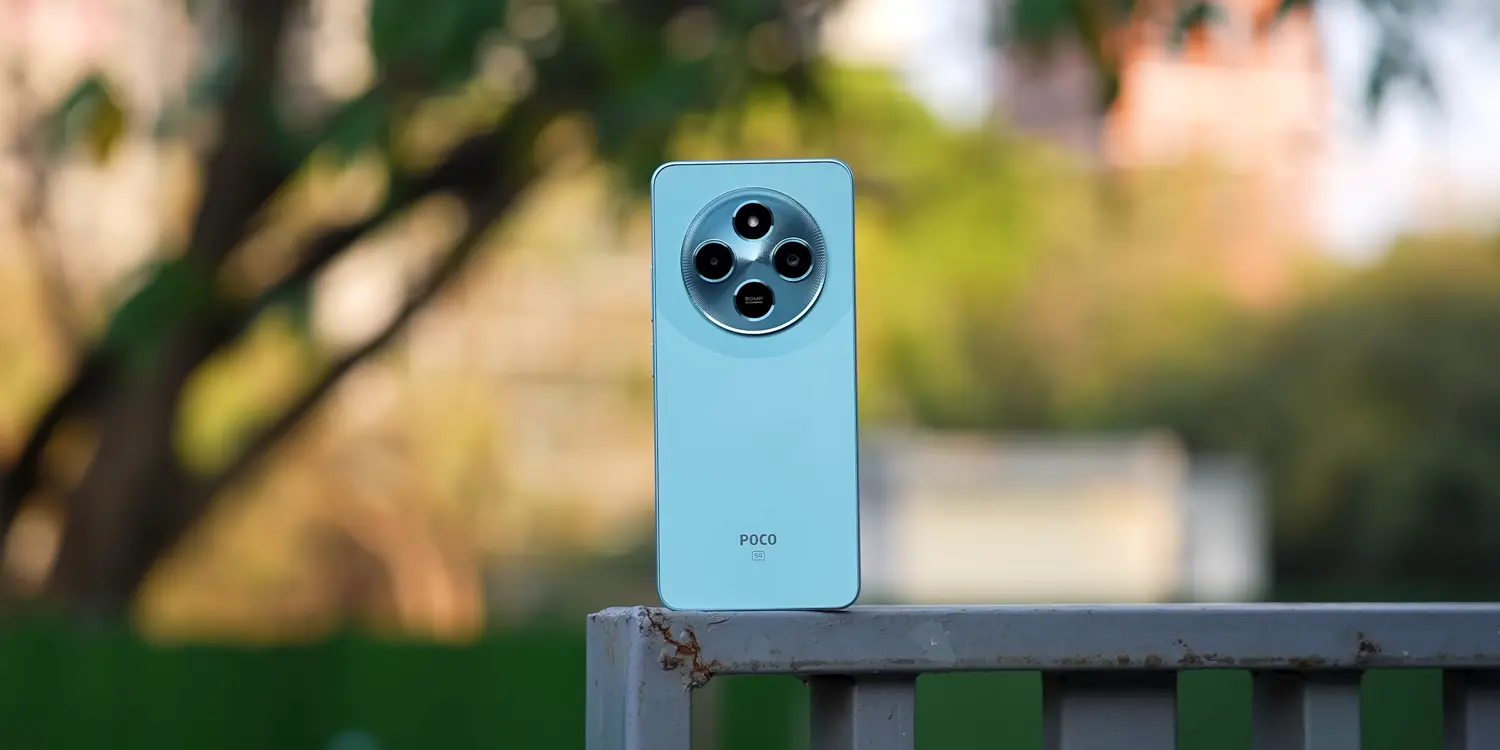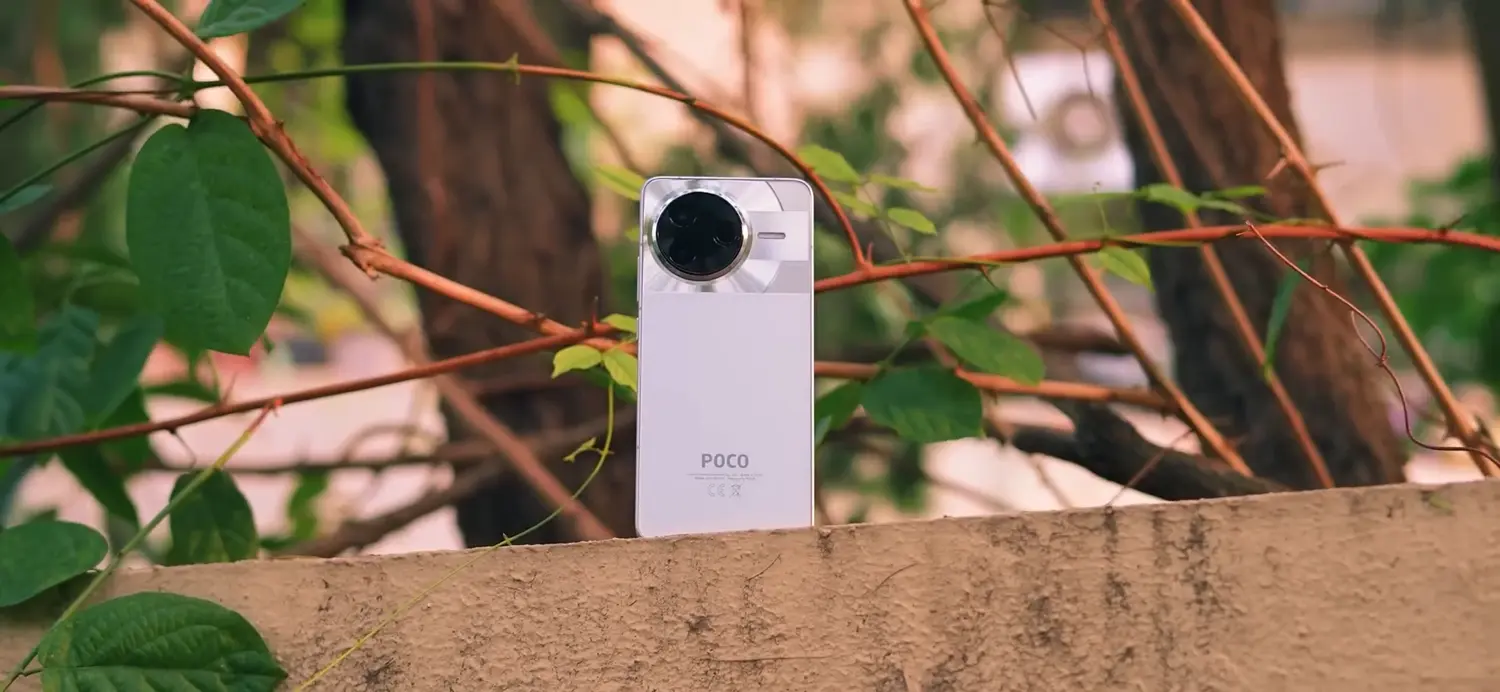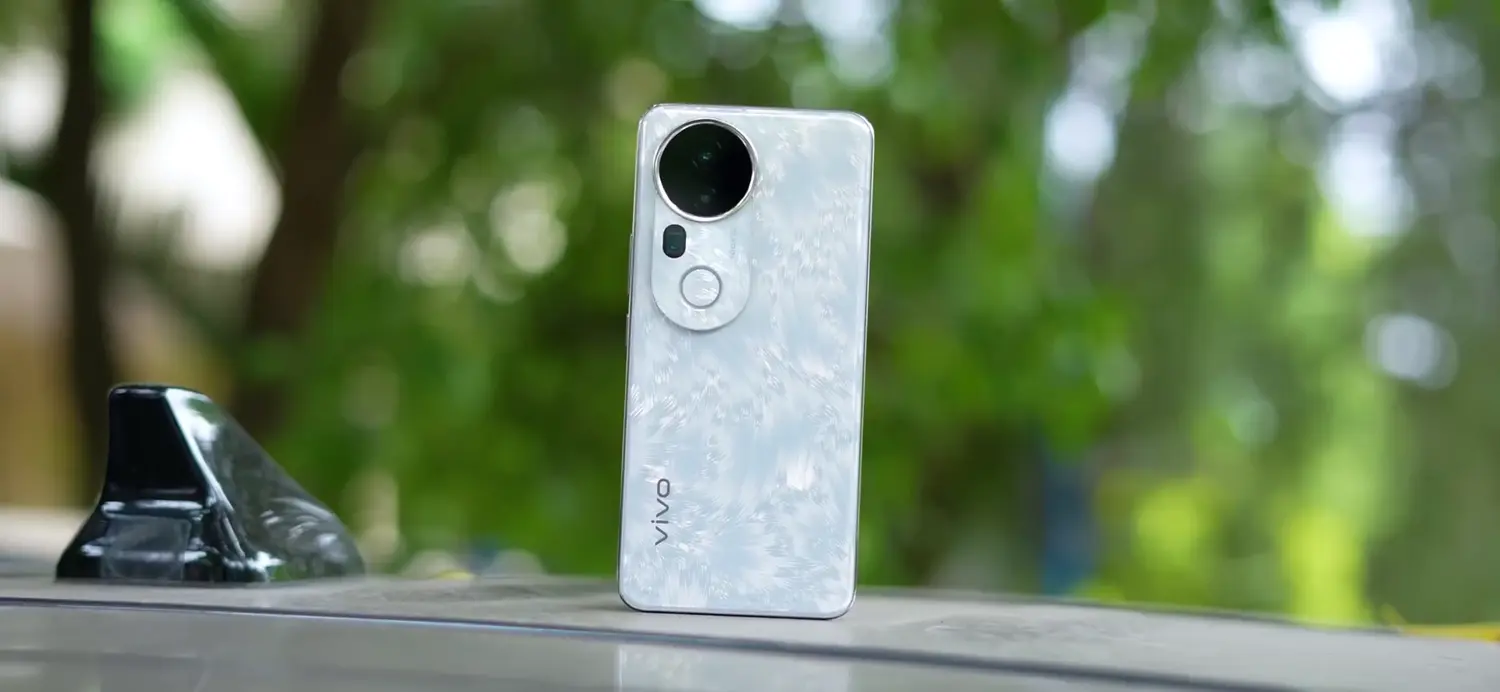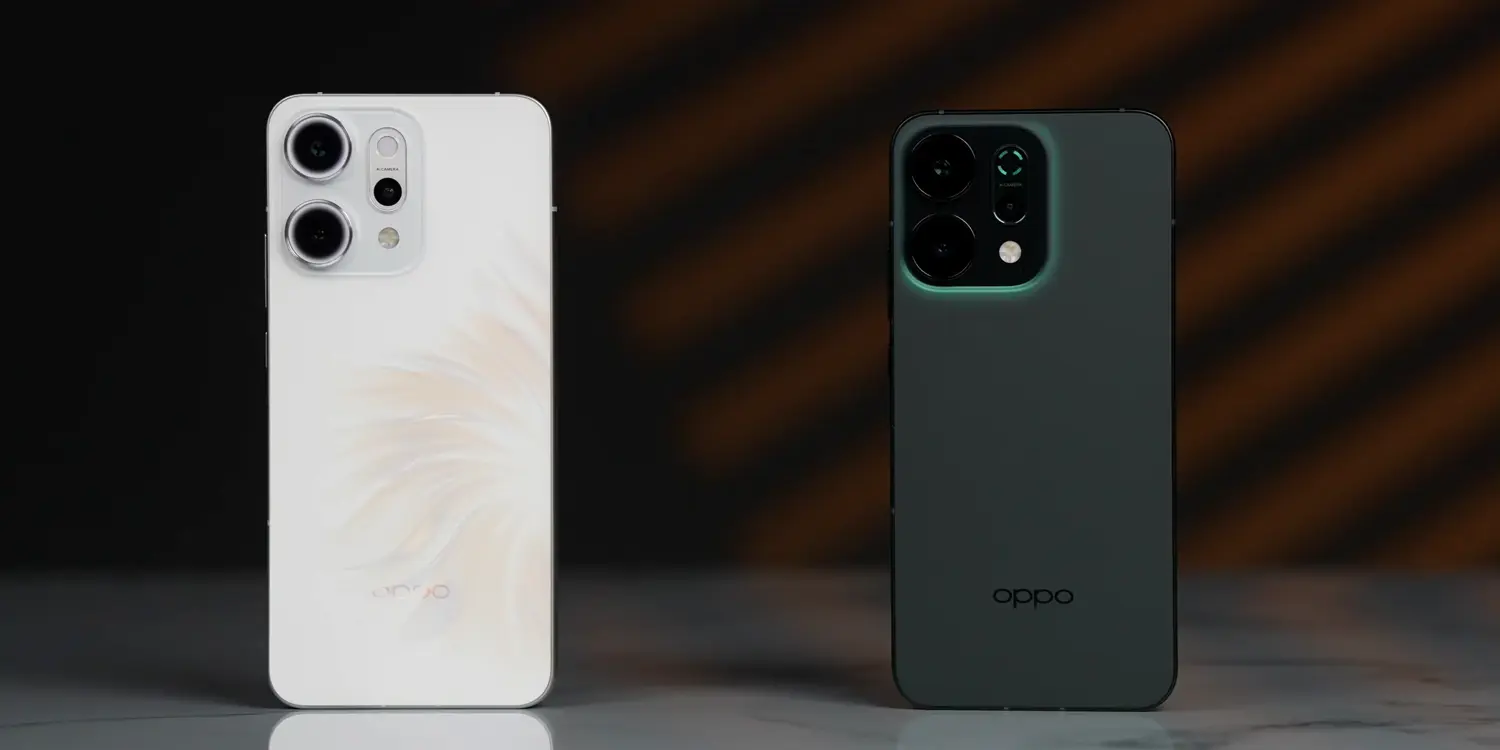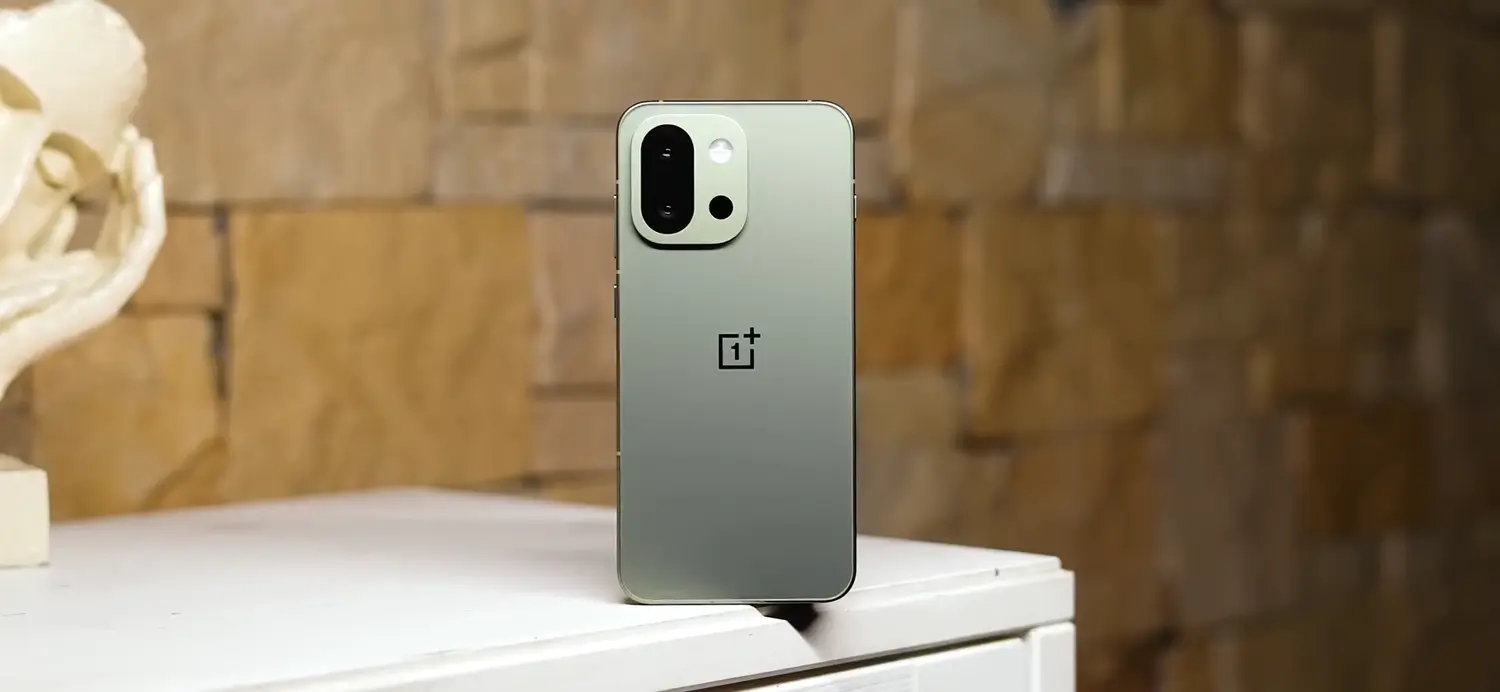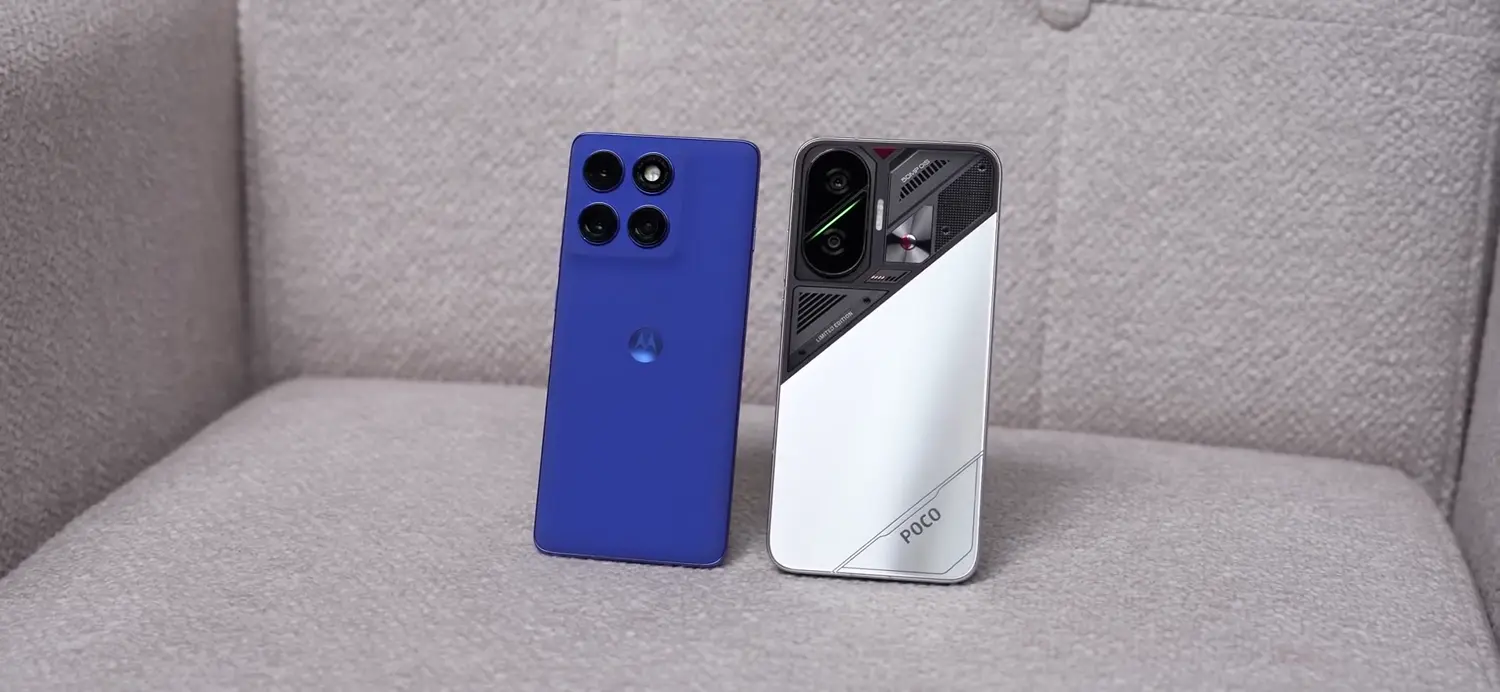The POCO M7 5G has entered the highly competitive budget smartphone market in India, priced under Rs 10,000, and it’s generating quite a buzz. Launched in March 2025, this device promises to deliver solid performance, a massive display, and reliable battery life at an affordable price point. With its predecessor, the POCO M7 Pro, setting a high bar in the sub-Rs 15,000 segment, the M7 aims to cater to budget-conscious users looking for a 5G-ready phone with decent features. But does it live up to the hype? Is it worth your hard-earned money? In this detailed review, we’ll analyze the POCO M7 5G’s design, performance, battery life, display, camera, software, and more to help you decide if it’s the right choice for you.
Design and Build: Stylish Yet Practical

The POCO M7 5G immediately catches the eye with its sleek and modern design, which feels premium for a phone priced at Rs 9,999. The Mint Green variant, in particular, stands out with its dual-tone finish—a glossy upper section housing the circular camera module and a matte lower half. This “stellar ring” design, as POCO calls it, mimics the aesthetics of more expensive smartphones, giving it a premium vibe. The glossy section shines under bright light, adding a touch of flair that makes the phone visually appealing.
Weighing 204.7 grams and measuring 8.3 mm in thickness, the POCO M7 feels substantial but not unwieldy. Its flat sides and slightly curved edges make it comfortable to hold, even for users with smaller hands, despite its tall profile. The phone’s polycarbonate back is resistant to smudges and offers a good grip, which is a practical choice for daily use. Additionally, the inclusion of an IP52 rating for dust and splash resistance is a welcome feature at this price, ensuring some level of durability for everyday scenarios.
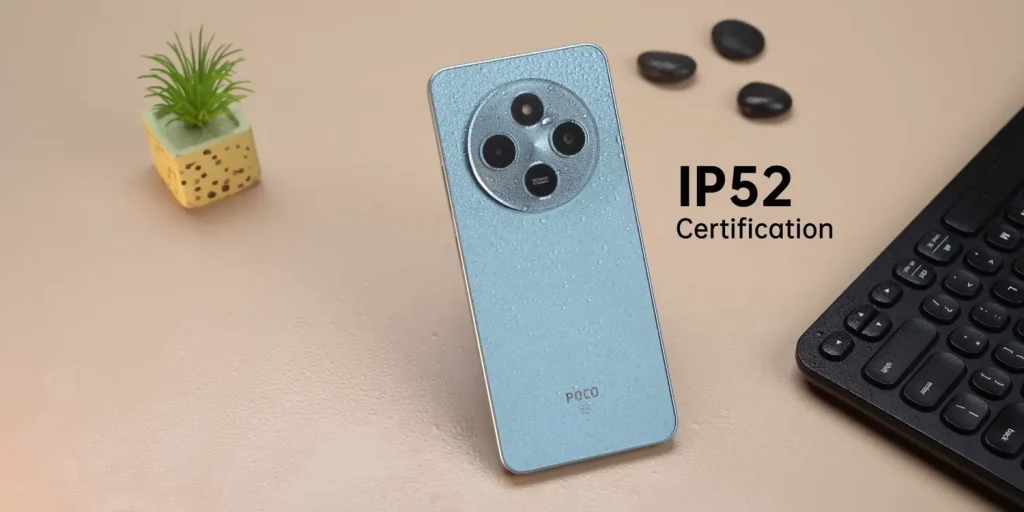
The port and button layout is thoughtfully designed. On the top, you get a 3.5mm headphone jack and an IR blaster, which are rare in modern smartphones. The right side houses the volume rocker and power button, which doubles as a fingerprint sensor. At the bottom, there’s a USB Type-C port, a microphone, and a speaker grille. The left side features a hybrid SIM tray that supports two SIM cards and a dedicated microSD card slot for expandable storage—a big win for users who need extra space.
While the phone feels sturdy, we conducted a light drop test, and it survived minor falls without visible damage. However, we’d recommend using a case for added protection, as one isn’t included in the box. Overall, the POCO M7’s design strikes a balance between style and practicality, making it one of the better-looking phones under Rs 10,000.
Display: Big and Immersive
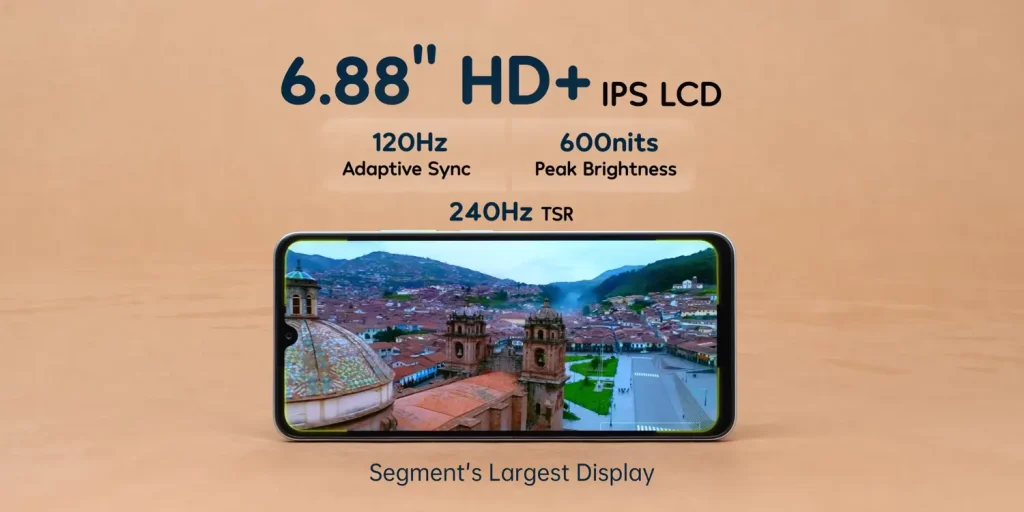
The POCO M7 5G boasts a massive 6.88-inch HD+ display, which is the largest in its segment. With a 120Hz adaptive refresh rate and a 240Hz touch sampling rate, the screen delivers smooth scrolling and responsive touch interactions, ideal for gaming and social media browsing. The display’s 600-nit peak brightness ensures decent visibility in outdoor conditions, though it’s not as vibrant as AMOLED panels found in higher-priced models like the POCO M7 Pro.
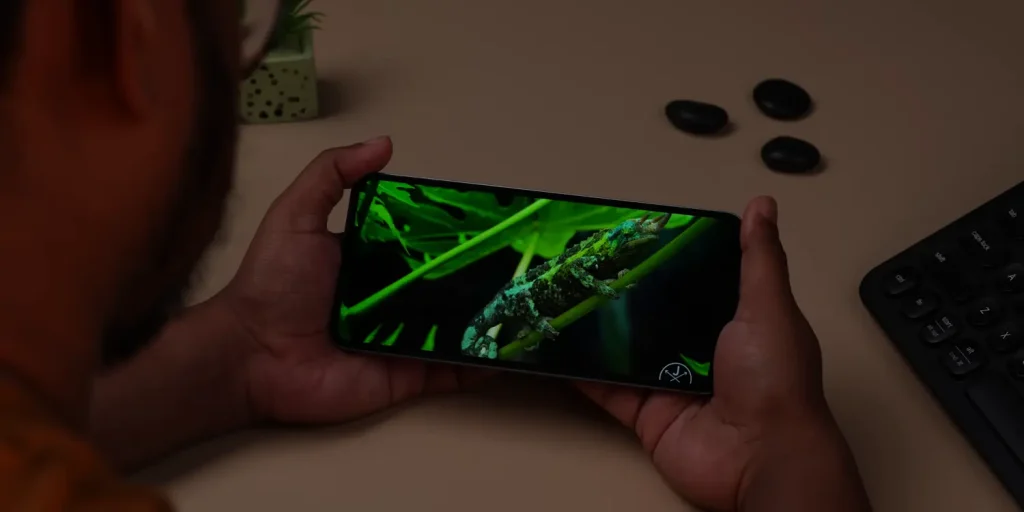
The HD+ resolution (720×1600 pixels) is a compromise at this price point, but the large screen size makes up for it by offering an immersive experience for watching videos and playing games. The display supports Widevine L1, allowing you to stream HD content on platforms like Netflix and Amazon Prime Video, which is a significant advantage in this segment. Additionally, the TÜV Rheinland Triple Eye Protection certification reduces blue light emission, making it easier on the eyes during prolonged use, especially in low-light conditions.
The bezels are slim on the sides, but the chin is slightly thicker, and there’s a waterdrop notch housing the front camera. While the notch is noticeable, it doesn’t significantly detract from the viewing experience due to the large screen size. For multimedia enthusiasts on a budget, the POCO M7’s display is a standout feature, offering a big, smooth, and vibrant canvas for content consumption.
Performance: Punchy for the Price
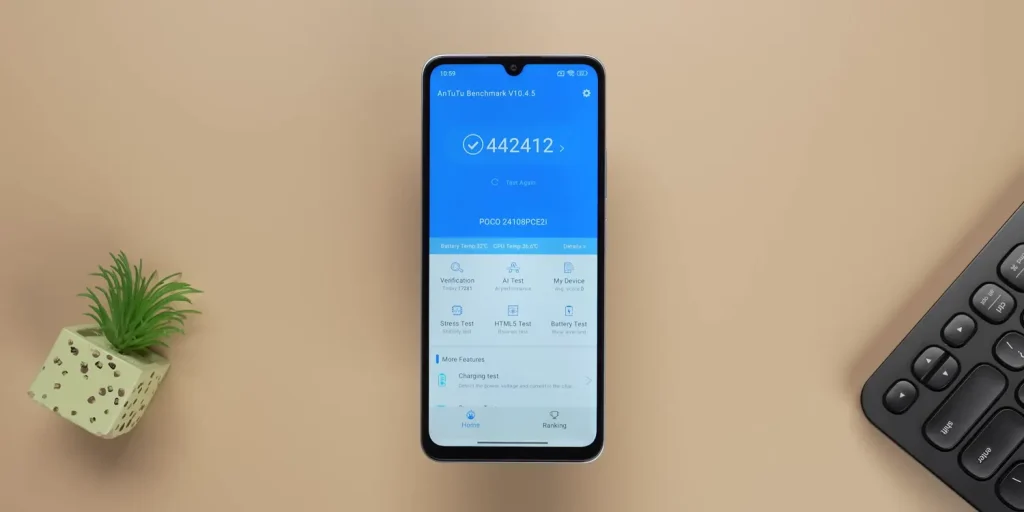
Under the hood, the POCO M7 5G is powered by the Qualcomm Snapdragon 4 Gen 2 chipset, built on a 4nm process. This processor is designed for efficiency and delivers solid performance for a budget phone. Paired with 6GB of RAM (expandable to 12GB via virtual RAM) and 128GB of storage in the base variant, the phone handles daily tasks like browsing, social media, and streaming with ease. The higher variant offers 8GB RAM with 128GB storage, priced at Rs 10,999.
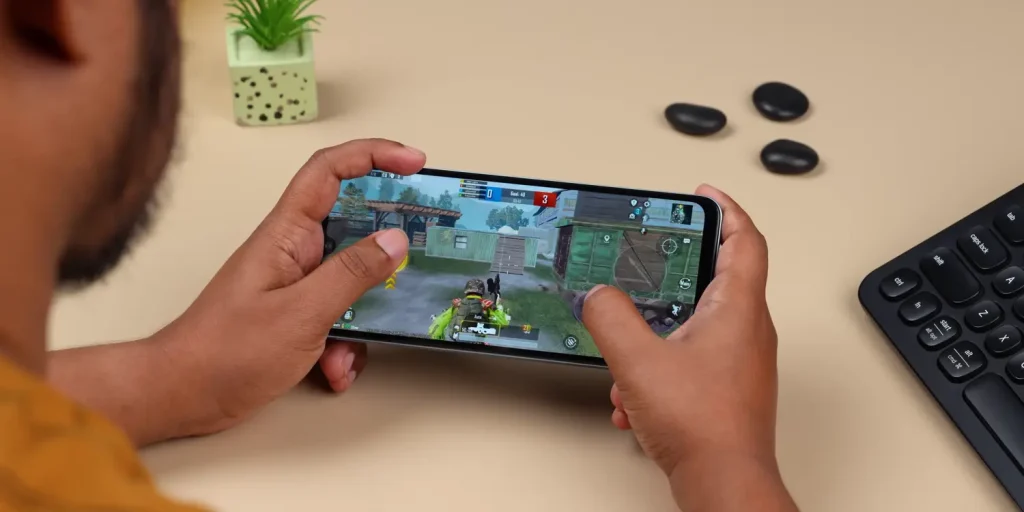
In benchmark tests, the POCO M7 scores around 440,000–450,000 on AnTuTu, which is impressive for its price range. Geekbench scores include 928 for single-core, 2220 for multi-core, and 407 for GPU performance, indicating that the phone can manage moderate workloads without stuttering. For casual gaming, titles like BGMI and Free Fire run smoothly on medium settings, though heavier games may require graphics adjustments to avoid frame drops.
The phone supports both standalone and non-standalone 5G networks, ensuring future-proof connectivity with seven 5G bands. It also features dual-band Wi-Fi and Bluetooth 5.2 for reliable wireless performance. However, the absence of a gyroscope sensor is a drawback, as it may affect gaming experiences that rely on motion controls. Overall, the POCO M7 delivers snappy performance for its price, making it a great choice for users prioritizing speed and multitasking on a budget.
Battery Life: All-Day Powerhouse
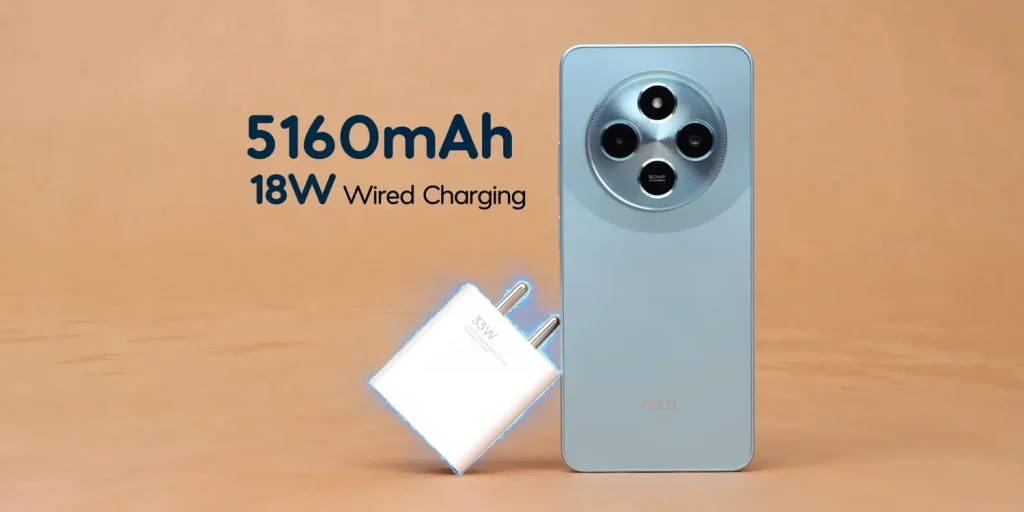
The POCO M7 5G comes with a massive 5,160mAh battery, which is among the largest in its segment. This capacity ensures exceptional battery life, easily lasting a full day with heavy usage, including gaming, video streaming, and social media browsing. For light users, the phone can stretch into a second day without needing a recharge.
The device supports 18W fast charging, and POCO includes a 33W charger in the box, which is a thoughtful addition since many competitors skip the charger entirely. A full charge takes approximately 1.5 hours, which is reasonable for a battery of this size. However, the phone can get slightly warm during charging, so it’s best to avoid heavy usage while plugged in.
The combination of a large battery and an efficient 4nm processor ensures that the POCO M7 is a reliable companion for users who need a phone that can keep up with their busy schedules. Whether you’re a student, a professional, or a casual user, the battery life won’t disappoint.
Camera: Decent for Daylight Photography
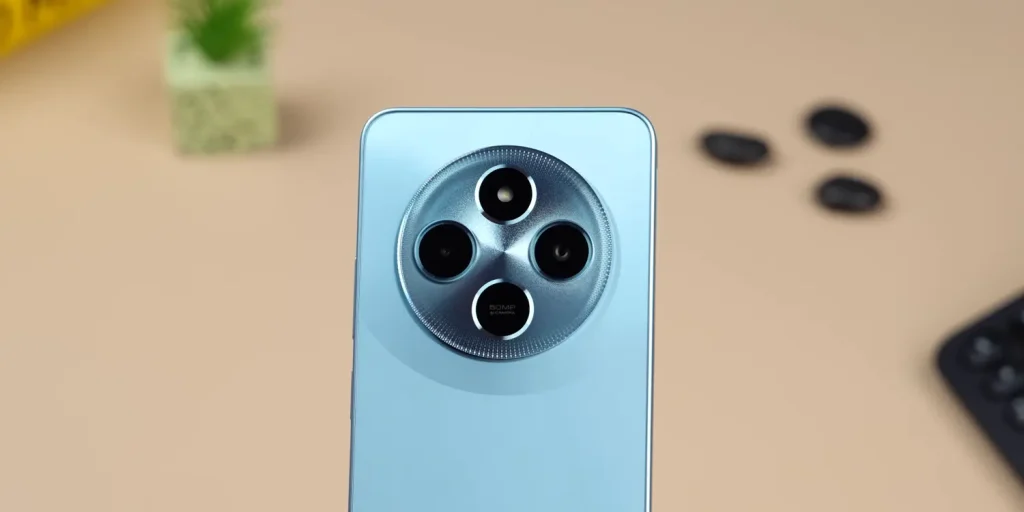
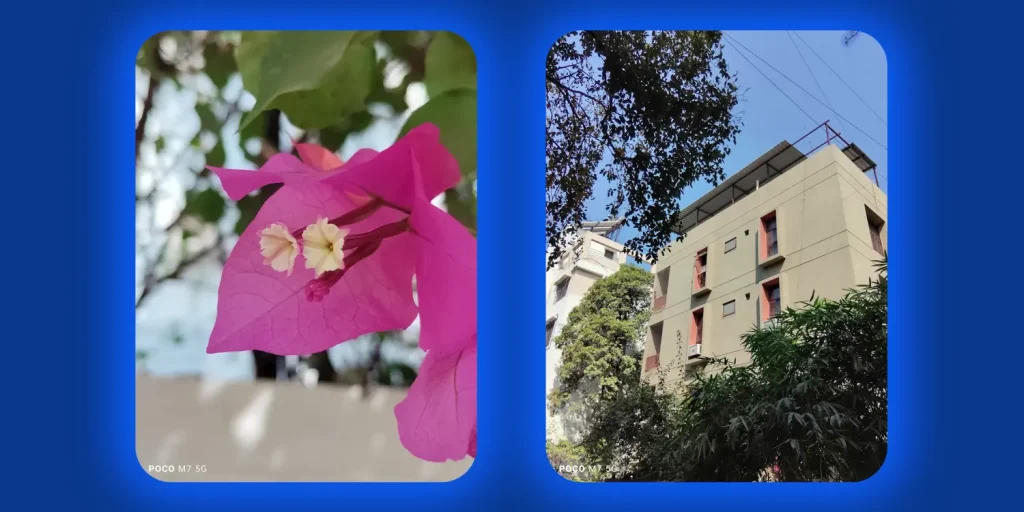

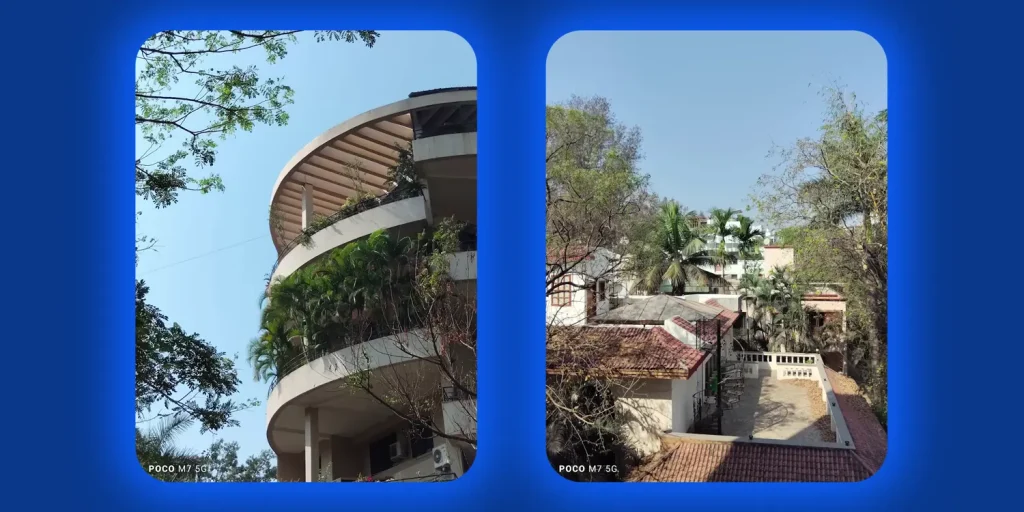
The POCO M7 5G features a dual-camera setup on the rear, consisting of a 50MP Sony IMX852 primary sensor with an f/1.8 aperture and a 2MP depth sensor. The front camera is an 8MP shooter housed in the waterdrop notch. While the camera system isn’t groundbreaking, it performs well for a phone under Rs 10,000, especially in daylight conditions.
In good lighting, the 50MP primary sensor captures sharp images with decent contrast and natural colors. The dynamic range is satisfactory, though some shots may appear slightly washed out when zoomed in. The depth sensor aids in portrait shots, delivering vibrant colors and decent edge detection, though it’s not as refined as higher-end models. The camera app offers features like Portrait mode, Night mode, Time-lapse, and a 50MP native mode for high-resolution shots, adding versatility for budget-conscious photographers.
Low-light photography is a weak point, as the sensor struggles to maintain detail and introduces noise, even with Night mode enabled. Compared to competitors like the Tecno Spark 30C, the POCO M7 lags in low-light performance, where the Spark 30C offers better exposure and clarity. The 8MP front camera produces acceptable selfies in bright conditions but tends to underexpose in low light, resulting in dull images with limited detail.
For videography, the phone supports Full HD recording at 30fps, with an option for 2x in-sensor zoom. While video quality is adequate for casual use, the lack of stabilization can make footage shaky. Overall, the POCO M7’s camera is suitable for everyday photography but falls short in challenging lighting conditions.
Software: HyperOS with Some Bloatware
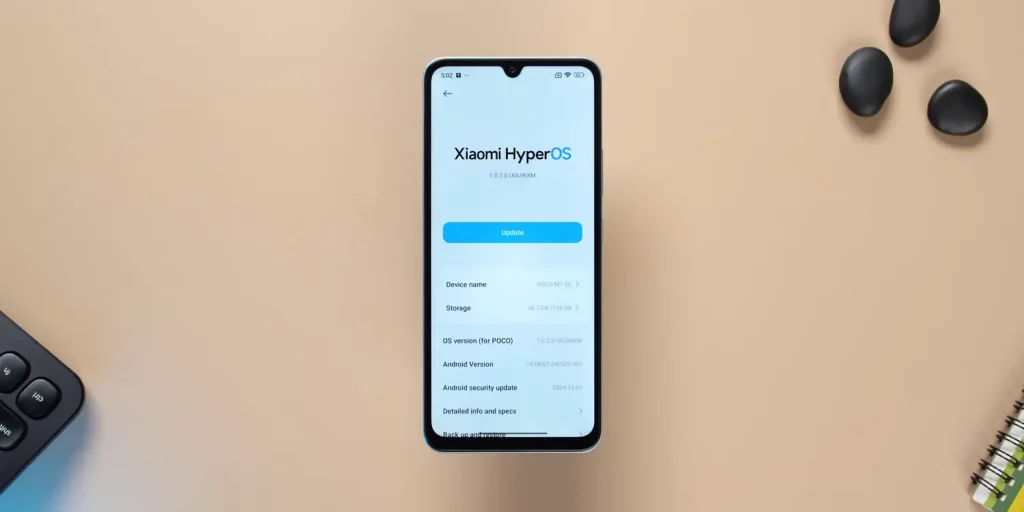
The POCO M7 5G runs HyperOS based on Android 14, offering a smooth and customizable user interface. However, the absence of Android 15 out of the box is a missed opportunity, especially since newer devices in higher price segments are launching with it. POCO promises two years of OS updates and four years of security patches, which is decent for a budget phone and ensures long-term software support.
HyperOS comes with a range of customization options, including lock screen tweaks and app-specific refresh rate settings. However, the software is marred by pre-installed bloatware, including third-party apps that can be uninstalled but may annoy users initially. The UI is generally responsive, with smooth animations and transitions, but occasional lag or frame drops may occur during heavy multitasking.
For users familiar with POCO’s software, the experience is consistent, but those seeking a cleaner UI might prefer alternatives like the Motorola G64, which offers a near-stock Android experience. Despite these drawbacks, HyperOS is feature-rich and functional for everyday use.
Multimedia and Connectivity: Well-Rounded Experience
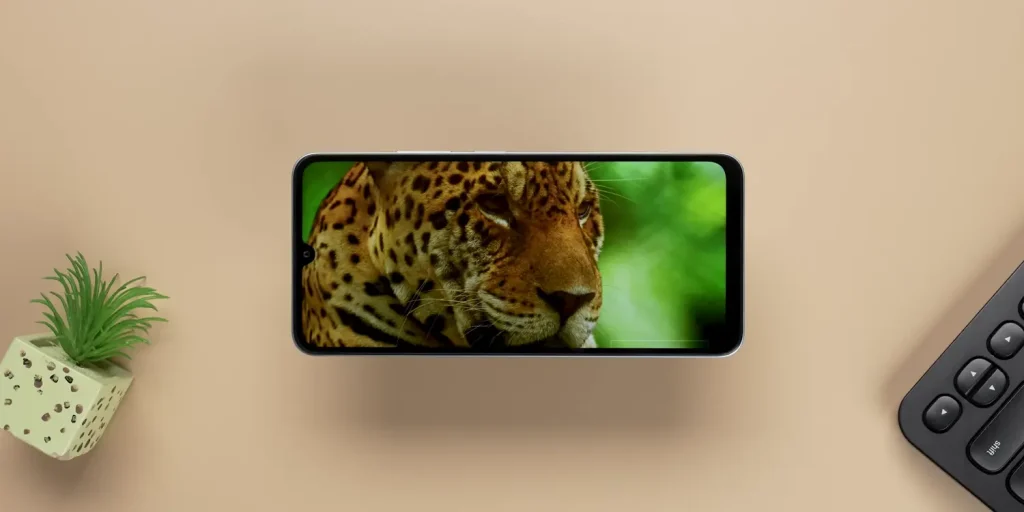
The POCO M7’s large 6.88-inch display and Widevine L1 support make it a great choice for multimedia consumption. Watching videos on platforms like YouTube and Netflix is enjoyable, thanks to the vibrant colors and decent viewing angles. The mono speaker delivers loud and clear audio, though it lacks the depth of stereo speakers found in pricier models.
Connectivity options are robust, with support for seven 5G bands, dual-band Wi-Fi, Bluetooth 5.2, and an IR blaster for controlling appliances. The inclusion of a 3.5mm headphone jack and FM radio adds value for users who prefer wired audio or local radio stations. The side-mounted fingerprint sensor is fast and reliable, and face unlock works well in good lighting conditions.
Specifications Table
| Feature | Specification |
|---|---|
| Display | 6.88-inch HD+, 120Hz Adaptive Refresh Rate, 600 nits peak brightness, TÜV Rheinland Triple Eye Protection |
| Processor | Qualcomm Snapdragon 4 Gen 2 (4nm) |
| RAM | 6GB (base) / 8GB, expandable to 12GB via virtual RAM |
| Storage | 128GB, expandable via dedicated microSD card slot |
| Rear Camera | 50MP Sony IMX852 (f/1.8) + 2MP depth sensor, LED flash |
| Front Camera | 8MP (waterdrop notch) |
| Battery | 5,160mAh, 18W fast charging (33W charger included) |
| Operating System | HyperOS based on Android 14, 2 years OS updates, 4 years security patches |
| Connectivity | 5G (7 bands), Dual-band Wi-Fi, Bluetooth 5.2, IR blaster, 3.5mm headphone jack |
| Build | Polycarbonate back, IP52 dust and splash resistance, 204.7g, 8.3mm thick |
| Price | Rs 9,999 (6GB + 128GB), Rs 10,999 (8GB + 128GB) |
Should You Buy the POCO M7 5G?
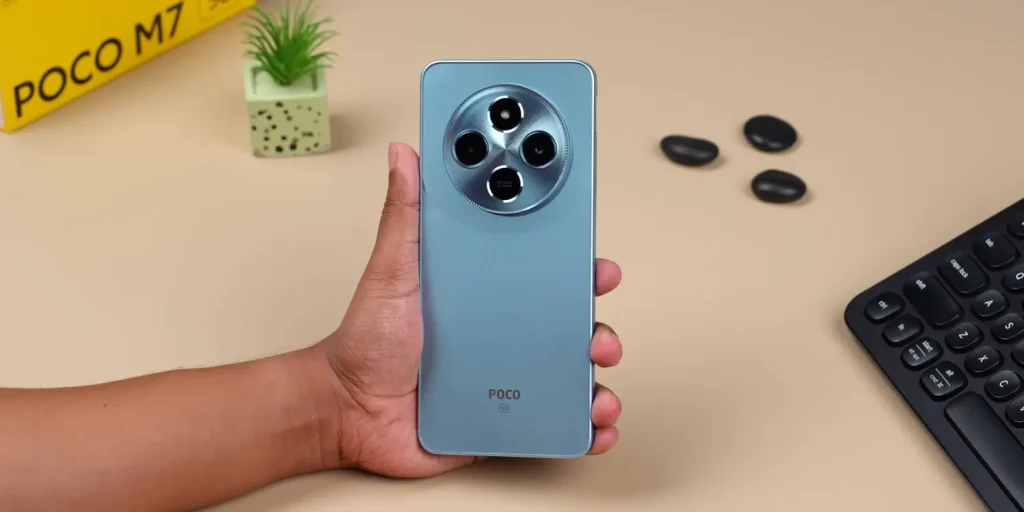
The POCO M7 5G is a compelling option for budget-conscious buyers seeking a 5G-ready smartphone with a large display, solid performance, and excellent battery life. Its standout features include the massive 6.88-inch 120Hz display, a 5,160mAh battery, and a capable Snapdragon 4 Gen 2 chipset, all of which are rare at this price point. The design is stylish, and the inclusion of a 3.5mm headphone jack, IR blaster, and dedicated microSD slot adds significant value.
However, the phone isn’t without its flaws. The HD+ resolution may disappoint users accustomed to sharper displays, and the camera struggles in low-light conditions. The presence of bloatware and the lack of Android 15 out of the box are minor drawbacks, but they’re not deal breakers given the price. Competitors like the Tecno Spark 30C offer better low-light photography, while the Motorola G64 provides a cleaner software experience, so it’s worth considering your priorities.
Pros:
- Large 6.88-inch 120Hz display with Widevine L1 support
- Excellent 5,160mAh battery with 33W charger included
- Solid performance with Snapdragon 4 Gen 2 and up to 12GB virtual RAM
- Stylish design with IP52 rating
- 3.5mm headphone jack, IR blaster, and dedicated microSD slot
Cons:
- HD+ resolution feels dated compared to Full HD+ displays
- Weak low-light camera performance
- Bloatware in HyperOS
- No gyroscope sensor for gaming
Verdict
If you’re on a tight budget and prioritize performance, battery life, and a large screen for multimedia, the POCO M7 5G is a fantastic choice at Rs 9,999. It delivers excellent value for money and outperforms many competitors in its segment. However, if camera quality or a bloatware-free software experience is a priority, you might want to explore alternatives like the Tecno Spark 30C or Motorola G64. For most users, though, the POCO M7 5G is a reliable and feature-packed budget smartphone that’s definitely worth considering.
